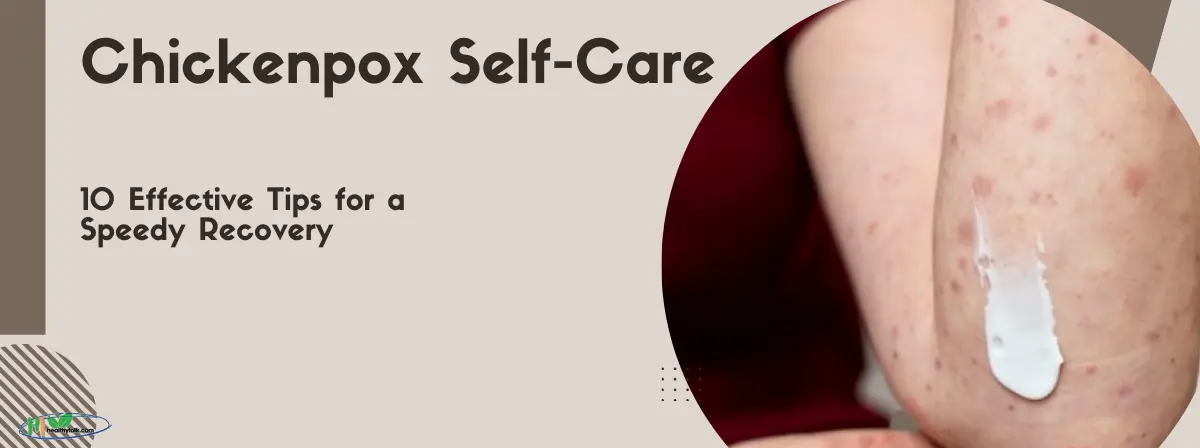This guide will provide 10 powerful chickenpox self-care tips to help manage chickenpox symptoms effectively.
Introduction
Chickenpox is a viral infection due to the varicella-zoster virus. It mostly affects children but can also occur in adults. The symptoms include itchy red spots, fever, fatigue, and loss of appetite. While chickenpox usually resolves on its own, proper chickenpox self-care can help ease discomfort and speed up recovery.
While as chickenpox both conditions cause red rashes of rubella and measles is more severe and longer-lasting.
Previous World Data on Chickenpox
According to the World Health Organization (WHO), before the widespread use of the chickenpox vaccine, there were approximately 4 million cases of chickenpox annually in the United States alone, leading to 10,500 hospitalizations and around 100 deaths per year. In many developing countries, chickenpox still poses a major health concern due to limited access to vaccinations.
1. Keep Skin Cool and Dry
One of the best ways to relieve itchiness and irritation is to keep your skin cool and dry. Avoid hot baths, as they can make the itching worse. Instead, take a lukewarm bath or use a cool compress to soothe the skin.
Pro Tip:
Add oatmeal or baking soda to bathwater for extra relief. Oatmeal contains anti-inflammatory properties that help reduce irritation.
2. Avoid Scratching
Scratching the chickenpox blisters can lead to infections and scars. To prevent this: (chickenpox self-care)
- Keep fingernails short and clean.
- Wear soft cotton gloves at night to avoid scratching while sleeping.
- Apply calamine lotion to the affected areas to reduce itchiness.
3. Use Antihistamines
Over-the-counter antihistamines can help reduce itching. However, always consult a doctor before taking any medication, especially for children.
4. Stay Hydrated
Chickenpox can cause dehydration, so it’s important to drink plenty of fluids. Water, herbal teas, and coconut water are great choices. Avoid sugary and caffeinated drinks, as they can worsen dehydration.
5. Wear Loose, Breathable Clothing
Tight clothing can irritate chickenpox blisters, making them more uncomfortable. Wear loose cotton clothes to allow the skin to breathe and heal faster.
6. Eat a Nutrient-Rich Diet
Eating a balanced diet helps strengthen the immune system and speeds up recovery. Include:
- Fruits and vegetables rich in vitamins A and C (carrots, oranges, spinach).
- Protein-rich foods like eggs, fish, and nuts to help tissue repair.
- Yogurt and probiotics to support gut health.
7. Get Plenty of Rest
Resting allows your body to fight the virus and heal faster. Avoid strenuous activities and get at least 8-10 hours of sleep every night.
8. Use Baking Soda Paste
A simple home remedy for chickenpox self-care is baking soda. Mix 1 to 1.5 tablespoon of baking soda with water to make a paste. Apply it to the itchy areas to relieve discomfort.
9. Avoid Spicy and Acidic Foods
If you have chickenpox sores in the mouth, spicy and acidic foods can cause irritation. Stick to soft, bland foods like mashed potatoes, soup, and bananas.
10. Maintain Good Hygiene
Keeping the affected areas clean reduces the risk of infections. Use a mild, fragrance-free soap and pat the skin dry instead of rubbing.
When to See a Doctor
Most cases of chickenpox resolve in 7-10 days, but you should seek medical help if:
- The fever lasts more than 4 days.
- The blisters become red, swollen, or filled with pus (signs of infection).
- You experience difficulty breathing or severe weakness.
FAQs for chickenpox self-care
1. Is chickenpox contagious?
Yes, chickenpox is highly contagious and spreads through direct contact with blisters, saliva, or airborne droplets from an infected person.
2. Can adults get chickenpox?
Yes, adults who have never had chickenpox or the vaccine can still get infected, and symptoms tend to be more severe than in children.
3. How long does chickenpox last?
Chickenpox typically lasts 7-10 days, with blisters forming in the first 3-5 days and scabbing over after that.
4. Can I take a bath with chickenpox?
Yes, a lukewarm bath with oatmeal or baking soda can help soothe the itching and irritation.
5. When should I see a doctor for chickenpox?
Seek medical help if:
- The fever lasts more than 4 days.
- The blisters become red, swollen, or filled with pus (signs of infection).
- You experience difficulty breathing or severe weakness.
Final Thoughts
Chickenpox can be uncomfortable, but with proper chickenpox self-care, you can manage the symptoms and recover quickly. Follow these 10 effective self-care tips to stay comfortable and prevent complications.
Source:

